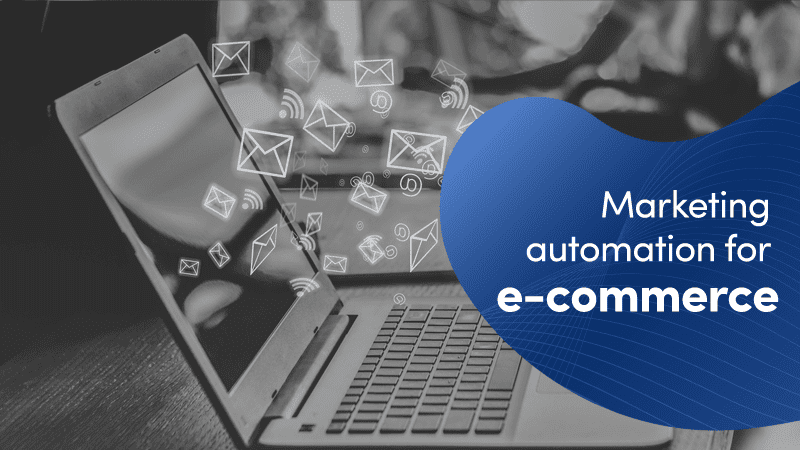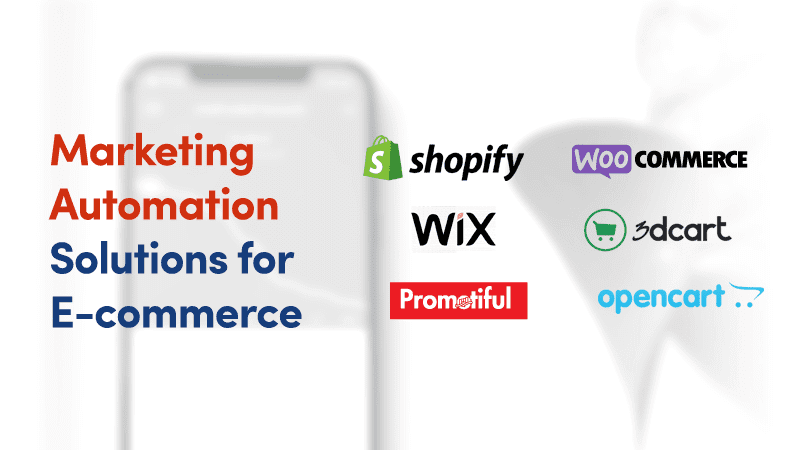
Starting an online business
Starting an e-commerce business has never been simpler, but it is still extremely challenging to scale it. Marketing automation could be a secret weapon. Especially when you're up against e-commerce powerhouses - with infinitely more money and resources than you. Play it smart and you have the opportunity to transform your business story into a David vs. Goliath narrative.
E-commerce in today's economy
In years to come, 2020 will be remembered as the year that transformed everything. Nowhere else has there been such unexpected and sudden development as in the digital and e-commerce sectors, which have exploded in the aftermath of the COVID-19 crisis.
The importance of digital change in healthcare, telework, and online education cannot be overstated, not least in maintaining our social relationships. The e-commerce sector, on the other hand, has experienced phenomenal development. People are shopping more online than ever before - e-commerce penetration rates are set to rise from 15% to 25% by 2025.
E-commerce for today’s buyers: personal, smart, lovebrand
We're all chasing conversions. But, in order to be a brand that converts, you must first be a smart tracker, then a personal brand, and last, a brand that people love. Did you know that 95% of visitors to your website do not make a purchase? Marketing automation can help you change that!
The sale is the easy part. What happens next? Developing broad plans for corporate growth is a tough task for the sales and marketing departments. Developing that plan through inbound marketing is the most cost-effective solution today.
Marketing Automation Solutions for E-commerce

Shopify is trusted by over a million of the world's most successful companies to sell, ship, and process payments everywhere. Shopify's flexibility is one of its most notable features. This e-commerce platform can meet the demands of every company, from startups to small enterprises to large-scale operations.
WooCommerce is a WordPress-based open-source e-commerce platform that is highly configurable. It works with common payment platforms such as PayPal, Stripe, Amazon Pay, and others. If you already have a WordPress site, WooCommerce is the easiest method to start selling online without having to rebuild it completely. Simply install the plugin and configure it from there.
Wix is a platform that allows you to build, design, manage, and develop your web presence precisely as you want. Wix is probably the world's most user-friendly website builder and you can also create an online store with your Wix website. Wix provides a completely customized storefront as well as a shopping cart. Add shopping wishlists, related product galleries, a rapid add-to-cart button, mini-carts, and other features.
Promotiful is a promotional website builder Promotiful that helps you to develop and implement digital consumer promotions in less than 3 hours with no coding required. Instead of concentrating your efforts on developing the promotional website, concentrate your efforts on effectively conveying it to customers and developing a more effective selling campaign.
From real-time delivery to payment options, 3DCart offers everything you need to set up an online store. It is one of the oldest e-commerce tools with 20 years of experience. But 3DCart is not suitable for everyone. Unlike Wix, the platform does not include a drag-and-drop site builder. To completely modify your templates and themes, you will instead need some understanding of programming and coding.
OpenCart is a free, open-source e-commerce platform. It is not a website builder, but you'll get access to more than 13,000 modules and themes with the OpenCart marketplace. OpenCart is used by over 342,000 e-commerce websites worldwide to sell online.
What can a martech solution do for your business?

View All Your E-commerce Data At One Place
The first step in using HubSpot for your e-commerce site is to connect HubSpot to your e-commerce store and sync your data across the platforms. Shopify connects directly with HubSpot. But, no matter what other platforms you use, HubSpot will help grow your online store by providing a host of tools to attract, convert, and delight, with seamless integration.
Know your customers’ buying patterns with customer segmentation
If your data is flying all over the place you are under-performing. Once your data is in HubSpot’s CRM, you can create nurturing campaigns based on what your customers want. The Recency, Frequency, and Monetary (RFM) value is one of the most efficient ways to identify your best customers. The integration solution allows you to deeply analyze your customers’ behavior and segment them based on their RFM value.
Automate Your Regular Marketing Tasks With Workflows
Businesses have changed dramatically in a short amount of time, but rather than seeing it as a threat, take it as an opportunity to optimize your digital processes and get the most of it. How? By automating your sales activity with workflows. Workflows not only save time but allow you to focus on other creative and competitive processes.
User-Friendly Dashboard & Performance Reports
We always try to create a seamless experience for the clients that visit our online shop. We know what user-friendly means when it comes to the services or products we are selling. But how about applying the same principle to our workflow? The HubSpot for e-commerce integration solution comes with an easy-to-use dashboard that is very simple and easy to use. This is the tool that can also help you generate comprehensive reports quickly and ready to impress.
Track revenue using direct attribution reporting
HubSpot for e-commerce provides direct attribution reporting between marketing efforts and customer orders. You can easily share the eCommerce data with your team. This way, you can use the insights provided by the report to generate new competitive strategies.
3 Technology Trends Shaping E-commerce

Think Mobile
In 2021, global mobile retail sales are anticipated to reach $3.57 trillion, up from $2.91 trillion in 2020. This is hardly surprising given that there are 3.8 billion smartphone and mobile phone users worldwide. It's worth noting that consumers use mobile to study items they're thinking about buying, not only to make purchases. Prioritize mobile and make it as convenient as possible.
Subscription services
The e-commerce subscription market is anticipated to expand by 68% by 2025, hitting $478.2 billion USD in revenue, and according to the Subscription Economy Index subscription services have grown by 403% during the last eight years. Is this data convincing enough for you to start thinking about a subscription plan for your business?
Gamification
Gamification makes online buying more enjoyable by incentivizing customers to act in a specific way in return for more rewards. Promotional competitions, spin-to-win possibilities, and tiered VIP loyalty programs are three typical gamification approaches. Try Promottiful if you want to set up a promotional website in less than 3 hours.
And remember, a Testa may drive itself to some extent, but it still needs you in the front seat to make those critical decisions. If you want an expert co-pilot you can always count on us. Let’s get in touch!



.png?width=265&name=jos%20(1).png)

